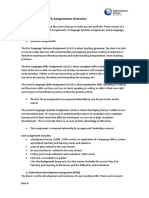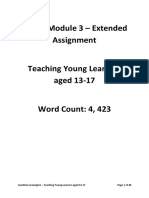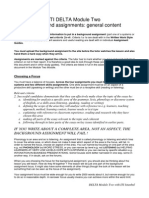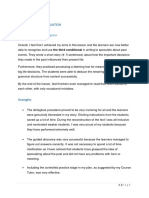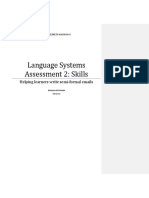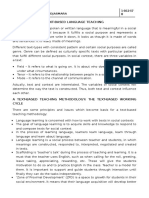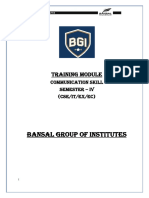0% found this document useful (0 votes)
448 views10 pagesDelta Module 1 Pre-Interview Task
The document provides information about an individual applying for an English language teaching course. It includes their personal details, education history, teaching experience, and responses to tasks assessing their language awareness and understanding of teaching methodologies. For the tasks, the individual demonstrates knowledge of grammar, vocabulary, text organization and the purpose of different classroom exercises. They also explain their implementation of communicative language teaching.
Uploaded by
Denis KolesnikovCopyright
© © All Rights Reserved
We take content rights seriously. If you suspect this is your content, claim it here.
Available Formats
Download as DOCX, PDF, TXT or read online on Scribd
0% found this document useful (0 votes)
448 views10 pagesDelta Module 1 Pre-Interview Task
The document provides information about an individual applying for an English language teaching course. It includes their personal details, education history, teaching experience, and responses to tasks assessing their language awareness and understanding of teaching methodologies. For the tasks, the individual demonstrates knowledge of grammar, vocabulary, text organization and the purpose of different classroom exercises. They also explain their implementation of communicative language teaching.
Uploaded by
Denis KolesnikovCopyright
© © All Rights Reserved
We take content rights seriously. If you suspect this is your content, claim it here.
Available Formats
Download as DOCX, PDF, TXT or read online on Scribd
/ 10


